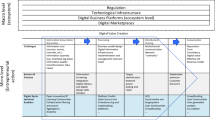Abstract
This introduction to the special issue “The Geography of Innovation and Entrepreneurship” in the Annals of Regional Science surveys a collection of nine papers which consider agglomeration economies and spatial heterogeneity of regions and firms through the lenses of innovation and entrepreneurship. They all make use of extensive and detailed data sources that enable models to provide a richer picture of how firms, industries and regions are affected by innovation and entrepreneurship but also how these entities shape and foster renewal. These factors include spatial concentration, industry composition, labor market characteristics, immigration, firm characteristics, R&D activities and R&D collaboration. The papers add to the understanding of the geography of innovation and entrepreneurship by suggesting alternative ways of identifying spillovers, combing and integrating internal and external knowledge sources, and by estimating the impact on innovation, new firm formation and growth.
Similar content being viewed by others
Notes
In the whole society, the society returns to private R&D investment are 30 % greater than the direct business returns. The society returns increase with the density in a given regional setting, and it decreases with the distance between knowledge source and destination (Bloom et al. 2013).
The patent intensity is about 20 % higher in a metropolitan area with twice the employment density of another metro area (Carlino et al. 2012). Regression analysis on Swedish data shows that the productivity premium associated with persistent R&D engagement is about 14 % in the largest city for an individual firm, compared to 8 % in non-metro locations when the reference firm is a non-R&D firm in non-metro. A firm without any R&D engagement does not benefit at all from the external milieu in metro areas Loof and Johansson (2014).
References
Bloom N, Schankerman M, Van Reenen J (2013) Identifying technology spillovers and product market rivalry. Econometrica 81(4):1347–1393
Carlino G, Carr J, Hunt R, Smith T (2012) The agglomeration of R&D labs. Federal Reserve Bank of Philadelphia Working Paper, 12–22
Carlino G, Kerr WR (2014) Agglomeration and innovation. National Bureu of Economic Research Worling Paper, 20367
Krugman P (1991) Increasing returns and economic geography. J Polic Econ 99(3):483–499
Loof H, Johansson B (2014) R&D strategy, metropolitan externalities and productivity: evidence from Sweden. Ind Innov 21(2):141–154
Marshall A (1890) Principles of economics. Macmillan and Co., Ltd, London
Moretti E (2004) Workers’ education, spillovers, and productivity: evidence from plant-level production functions. Am Econ Rev 94(3):656–690
Ohlin B (1933) Interregional and international trade. Harvard University Press, Cambridge




